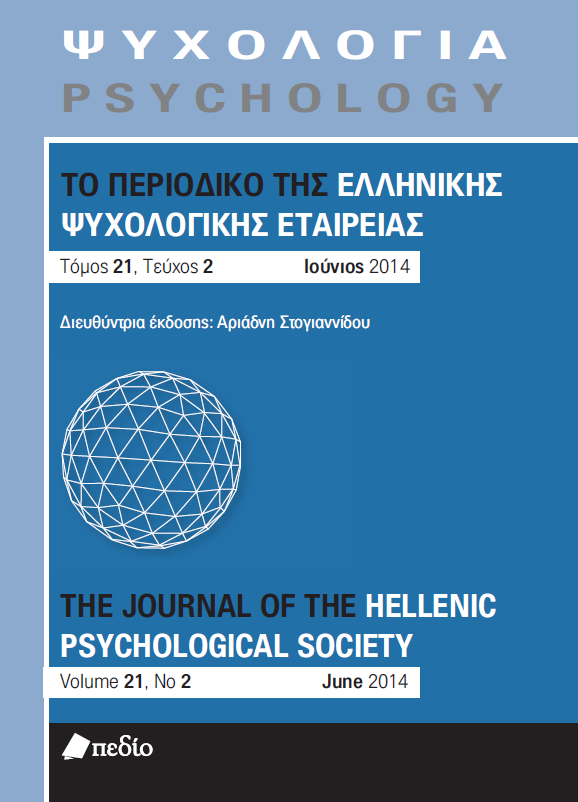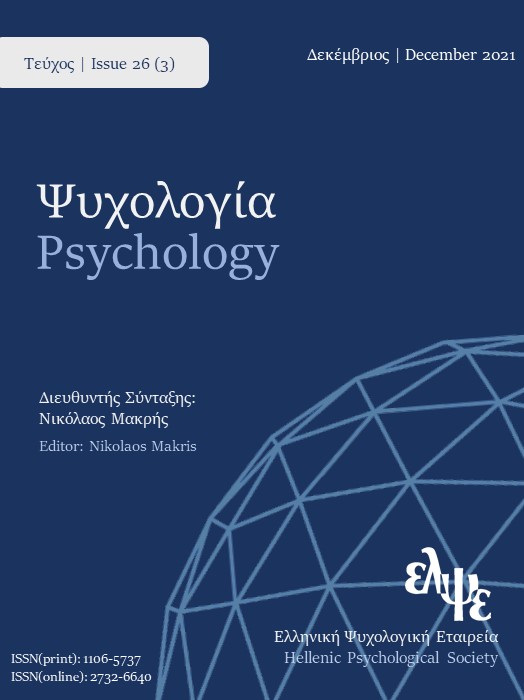Πρόσληψη του σχολικού εκφοβισμού στην Κύπρο ως προς την εμπλοκή του μαθητικού πληθυσμού

Περίληψη
Στόχος της παρούσας μελέτης είναι η διερεύνηση των αντιλήψεων των μαθητών Γυμνασίου και Λυκείου στην Κύπρο ως προς το σχολικό εκφοβισμό και η ανάδειξη των διαφορών σύμφωνα με την ηλικία, το φύλο και την εμπλοκή. Στην έρευνα συμμετείχαν 514 μαθητές/τριες ηλικίας 13 και 16 ετών, οι οποίοι απάντησαν σε κλειστό ερωτηματολόγιο. Σύμφωνα με τα ευρήματα, οι γυναίκες είναι πιο αρνητικές απέναντι στον εκφοβισμό απ’ ό,τι οι άνδρες. Οι μαθητές/τριες ηλικίας 13 ετών επιδεικνύουν φόβο απέναντι στο θύτη και θεωρούν αναγκαία την τιμωρία του, ενώ επισημαίνουν παράλληλα ότι το θύμα προκαλεί το θύτη, ενώ οι μαθητές/τριες ηλικίας 16 ετών υποστηρίζουν περισσότερο ότι οι θύτες βλάπτουν τα θύματα. επίσης, τα θύματα, τα θύματα/μάρτυρες, οι
μάρτυρες και οι μη εμπλεκόμενοι δείχνουν φόβο απέναντι στο θύτη, επιζητούν την τιμωρία του και τάσσονται υπέρ των αδύναμων θυμάτων. Αντίθετα, οι κατηγορίες που εμπεριέχουν τους θύτες δεν δείχνουν φόβο απέναντι στο θύτη, δε συμφωνούν με την τιμωρία του και δε θεωρούν ότι βλάπτουν τα θύματα.
Λεπτομέρειες άρθρου
- Πώς να δημιουργήσετε Αναφορές
-
Madoglou, A., & Dimitriou, S. (2020). Πρόσληψη του σχολικού εκφοβισμού στην Κύπρο ως προς την εμπλοκή του μαθητικού πληθυσμού. Ψυχολογία: το περιοδικό της Ελληνικής Ψυχολογικής Εταιρείας, 21(2), 113–129. https://doi.org/10.12681/psy_hps.23271
- Τεύχος
- Τόμ. 21 Αρ. 2 (2014)
- Ενότητα
- ΕΜΠΕΙΡΙΚΕΣ ΕΡΓΑΣΙΕΣ

Αυτή η εργασία είναι αδειοδοτημένη υπό το Creative Commons Attribution-ShareAlike 4.0 International License.
Το περιοδικό ΨΥΧΟΛΟΓΙΑ έχει υιοθετήσει μία πολιτική Platinum open-access. Τα έξοδα υποβολής, επεξεργασίας ή δημοσίευσης των εργασιών καλύπτονται από την Ελληνική Ψυχολογική Εταιρεία. Τα πνευματικά δικαιώματα των δημοσιευμένων εργασιών προστατεύονται από την άδεια 'Creative Commons Attribution-ShareAlike 4.0 International'. Οι Συγγραφείς διατηρούν τα Πνευματικά Δικαιώματα και χορηγούν στο περιοδικό το δικαίωμα της πρώτης δημοσίευσης. Η άδεια αυτή επιτρέπει σε τρίτους, να χρησιμοποιούν την εργασία σε οποιαδήποτε μορφή, με την προϋπόθεση της διατήρησης των διατυπώσεων που προβλέπονται στην άδεια σχετικά με την αναφορά στον αρχικό δημιουργό και την αρχική δημοσίευση στο περιοδικό ΨΥΧΟΛΟΓΙΑ. Επιπλέον, κάθε διανομή της εργασίας οφείλει να γίνεται με τους ίδιους όρους διανομής, δηλαδή με την ίδια άδεια Creative Commons.





